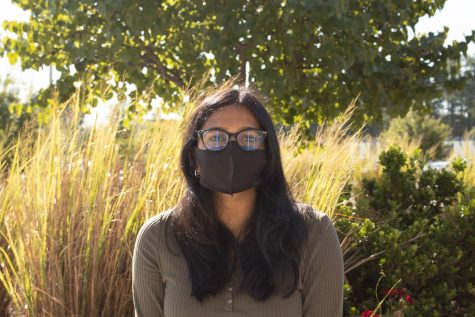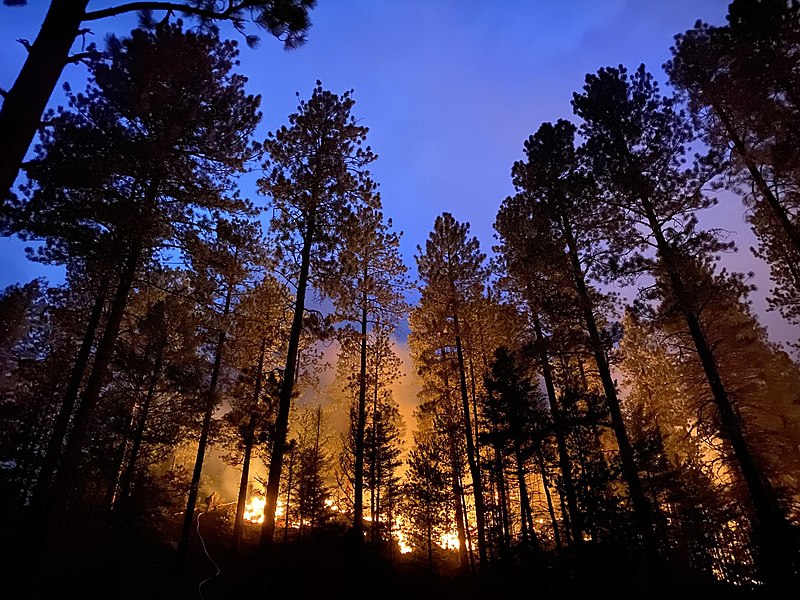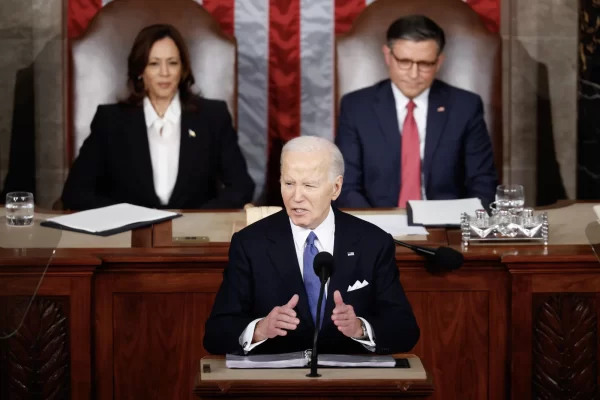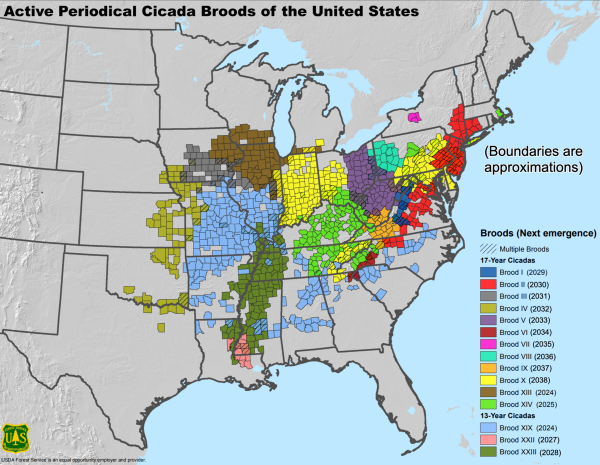As Climate Change Continues to Worsen, the Amount of Wildfires Seen in the U.S. Continues to Grow
Wildfires in New Mexico in 2020. Photo by USFS via. Wikimedia Commons
While the peak of wildfire season is typically in June, so far this year, New Mexico has already seen wildfires burn over 173,000 acres, more than in seven of the last eight years, as seen in statistics from the Southwest Coordination Center.
Climate change combined with the megadrought across the Western US leaves soil with no moisture. Due to this western forests have become increasingly dry, leading large amounts of smoke to move eastward across the U.S.
In a study, published by Nature Communications, researchers detailed that almost 130 million people in the Pacific Northwest, central U.S., and Northeast would be exposed to harmful chemicals due to the large plumes of smoke that come from wildfires.
Atmospheric chemist and lead author of the study, Rebecca Buchholz explained, “Wildfire emissions have increased so substantially that they’re changing the annual pattern of air quality across North America. It’s quite clear that there is a new peak of air pollution.”
Andrew Church, a meteorologist at the National Weather Service in Albuquerque told CNN that because the ground is so dry, there’s nothing to give moisture back to the atmosphere or bring humidity to the area. This results in smaller fires growing and rapidly spreading.
On April 23rd, New Mexico Gov. Michelle Lujan Grisham said that 16 of the state’s 30 countries were actively facing 20 wildfires.
In the case of these persistent wildfires, any precipitation is appreciated as said by CNN meteorologist Robert Shackelford. So when states prone to wildfires see the forecast predicting thunderstorms it would be a good thing, right?
While they may seem like a good thing, in states currently riddled with wildfires, thunderstorms only add to the list of concerns. According to the National Weather Service in Albuquerque, the thunderstorms could bring “large hail, damaging winds, lightning strikes, brief heavy rain, and blowing dust.”
The precipitation received from these thunderstorms would leave states with the weather considered to be dry thunderstorms, which are not at all helpful in resisting these wildfires.
However, many are continuing to battle these wildfires as said by incident commander Carl Schwope. “Firefighters are fully engaged we have the whole suite of our firefighting forces available — air resources, ground resources, intelligence resources.”
Although, no matter how much effort they put in to suppress these wildfires, most of the time, they can’t be stopped.
The recent fires have been becoming worse and worse with extreme wind conditions this past weekend, expanding the wildfire in Hermit’s Peak and creating a fire complex with more than 180 miles of the perimeter and finding itself in the top 15 largest fires on record in New Mexico.
Fires in Arizona have caused evacuation orders to be put in place for many neighborhoods. Recently, when the evacuation orders were lifted for neighborhoods affected by the Tunnel Fire, residents saw the full-scale destruction of their homes for the first time.
Shirley Ernst, after seeing a video displaying the burnt remains of her house, told CNN, “It’s unbelievable, you know? We still feel like this is a dream, a bad dream. All your efforts, all your sacrifices, just there, you know, in ashes … There’s no word to describe the pain.”
And those fortunate enough to experience no damage to their homes, find themselves facing a little bit of survivor guilt, knowing that their property and their belongings are doing alright, while others find themselves looking to their house to see nothing.
With worsening conditions, “it does look like chances are it’s going to get worse before it gets better,” said Church. “We might have to wait quite a while until the monsoon kicks in, hopefully sometime in late June.”

Shloka Sunil is a freshman at Green Level who is excited to write for The Gator’s Eye this year. In her free time she loves to read, watch netflix, and...












